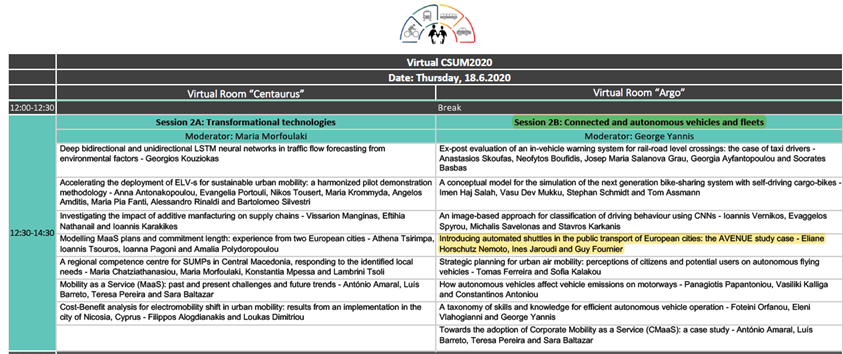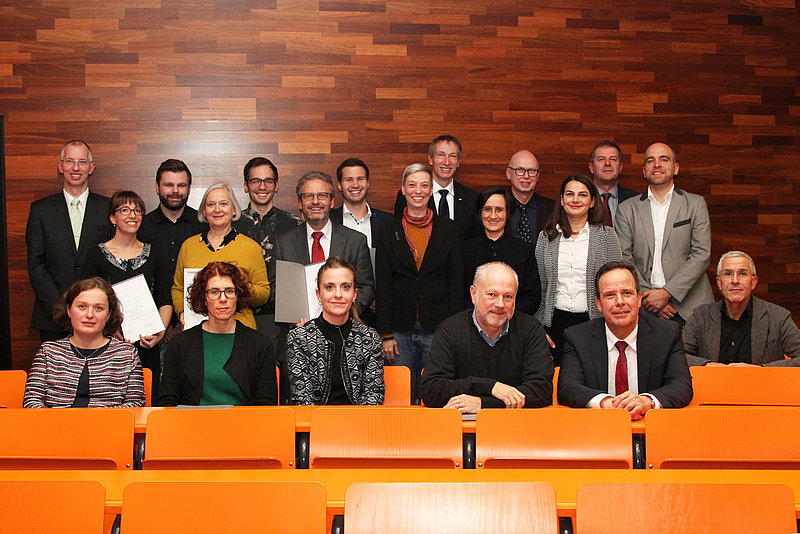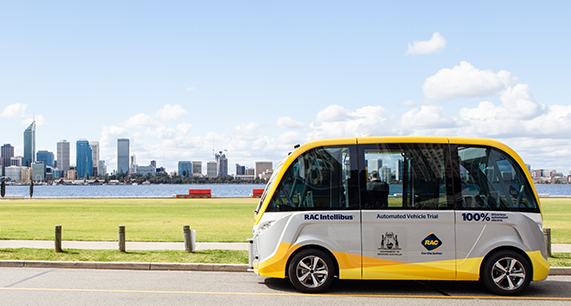New scientific article: How to measure the impacts of shared automated electric vehicles on urban mobility
/in EU, HS PF, News, Research /by Dimitri KonstantasAbstract: How to measure the impacts of shared automated electric vehicles on urban mobility? A scientific article, published in “Transportation Research Part D: Transport and Environment”, presents findings from the AVENUE project and proposes a method to measure the impacts of Shared Automated Electric Vehicles on mobility through a sustainability assessment. The arrival of new technologies and innovations on mobility, such as automated vehicles, creates opportunities to tackle urban challenges. The evaluation of the impacts of these innovations on the mobility system requires a comprehensive set of criteria and parameters. This article proposes a method to measure the impacts of Shared Automated Electric Vehicles (SAEV) on mobility through a sustainability assessment. Based on an integrative literature study and on the context of AVENUE, a European project deploying automated shuttles in the public transport of European cities, a set of indicators is defined. These mobility indicators assess the social, environmental, economic, governance, and technical impacts of SAEV. The multiple dimensions of the mobility indicators contribute to filling gaps of knowledge about the performance of SAEV. The proposed method allows an evaluation and comparison of SAEV to other means of transport and thus strengthens scientifically based recommendations for transportation policies.How to measure the impacts of shared automated electric vehicles on urban mobility? A scientific article, published in “Transportation Research Part D: Transport and Environment”, presents findings from the AVENUE project and proposes a method to measure the impacts of Shared Automated Electric Vehicles on mobility through a sustainability assessment.
How to measure the impacts of shared automated electric vehicles on urban mobility
Eliane Horschutz Nemoto, Roukaya Issaoui, Dorien Korbee, Ines Jaroudi, Guy Fournier
Journal: Transportation Research Part D: Transport and Environment
Date: 18 March 2021, DOI: 10.1016/j.trd.2021.102766
Download: Publisher’s version (Gold Open Access)
New Scientific Article: Introducing Automated Shuttles in the Public Transport of European Cities: The Case of the AVENUE Project
/in EU, HS PF, News, Research /by Dimitri KonstantasAbstract: Our current mobility paradigm has reached a tipping point. Individual mobility, based on cheap fossil fuel and high CO2 emissions no longer meet the needs posed by a globally increasing demand for passenger mobility, neither corresponds to the climate agenda.
In this regard, innovations and technologies play an important role to shape the future mobility and provide solutions for more efficient, affordable, accessible, and sustainable mobility in cities.
This paper aims to explore how innovations on mobility, such as shared automated electric vehicles (SAEV) can contribute to a positive change in the mobility paradigm and sustainable mobility, and to this end, which are the current obstacles to be overcome and the key factors related to SAEV’s deployment. Thereby, it presents the case of the Autonomous Vehicles to Evolve to a New Urban Experience – ‘AVENUE’, a European project that has implemented pilot trials to test automated shuttles within the public transport of Lyon, Geneva, Luxembourg, and Copenhagen.
Based on primary data from the project and secondary data from AVENUE public reports, the study reports on the project implementation in the four cities and first learnings through obstacles and key factors to accelerate the deployment of automated shuttles in cities. It contributes to the discussion on technical & operational, social, and legal obstacles as well as key elements in the deployment of automated shuttles.
Introducing Automated Shuttles in the Public Transport of European Cities: The Case of the AVENUE Project
Eliane Horschutz Nemoto, Ines Jaroudi, Guy Fournier
Book: Advances in Intelligent Systems and Computing, Advances in Mobility as a Service Systems”
Date: 4 November 2020, DOI: 10.1007/978-3-030-61075-3_27
* Note: This is an extended version of the conference paper in CSUM2020
Download: Publisher’s version (Subscription required) | Author’s version (Green Open Access)
Event: AVENUE @ 5th Conference on Sustainable Urban Mobility (CSUM 2020)
/in EU, Event, HS PF, News, Research /by Dimitri KonstantasOn the 18th of June 2020, Eliane Horschutz Nemoto (HS PF) presented H2020 AVENUE project and the work conducting in the framework of this project at the 5th Conference on Sustainable Urban Mobility (CSUM 2020)
More info can be found at http://csum.civ.uth.gr
Announcement: HS PF awards perspective, teaching and research prizes
/in Announcement, HS PF, News /by Anne-Christine DussThe “Research Excellence Award” was awarded to Pr Guy Fournier. He is part of the management team of the AVENUE project, which integrates autonomous minibuses into the public transport system of different cities in a large field trial and advances technical solutions.
The IAF’s Research Excellence Award in the Professors category was accepted by two individuals. First, Professor Dr. Guy Fournier from the Department of Industrial Engineering (WI) was honored. “Guy moved to Pforzheim more than ten years ago, where he has been instrumental in the internationalization of the WI department and the Faculty of Engineering. His international networking is essential for his research, in which he is particularly driven by sustainable mobility. He supports municipalities across Europe in energy and mobility issues,” said laudator Dr. Tobias Viere, Professor of Energy and Material Flow Analysis. An outstanding achievement in this area is the successful acquisition of an EU project with a total volume of 20 million euros and 16 partners from seven countries. Guy Fournier is part of the management team of the AVENUE project, which is integrating autonomous minibuses into the public transport systems of various cities in a large-scale field trial and advancing technical solutions. The knowledge gained will be the basis for recommendations on the further development of transport for governments and cities in Europe.
Autonomes Fahren: EU finanziert größten Feldversuch autonomer Minibusse
/in Announcement, HS PF /by atelierssudArtikel in Hochschule Pforzheim
Die Forschergruppe von AVENUE – Autonomous Vehicles to Evolve to a New Urban Experience – verfolgt einen Ansatz, der vielversprechend ist: Flotten von autonomen Kleinbussen vom Projektpartner Navya sollen in Gebieten mit geringer bis mittlerer Nachfrage in vier europäischen Städten – Genf, Lyon, Kopenhagen und Luxemburg – sowie später in zwei weiteren Städten betrieben werden. Die Vision: Diese Busse sollen in Zukunft nicht einfach in den bereits bestehenden vorterminierten Nahverkehrsfahrplan eingefügt wurden, sondern in Form einer „Mobility Cloud“ intelligent und flexibel auf die Mobilitätsbedürfnisse der Stadt und ihrer Bewohner reagieren. Die angestrebte Lösung ermöglicht sicheren, effizienten, umweltfreundlichen Nahverkehr, der die Mobilitätsansprüche der urbanen Bevölkerung erfüllt und individuelle Transporte von A nach B genau dann anbietet, wenn diese gebraucht werden. Modernste Technologien und Kommunikationskonzepte kommen zum Einsatz, um die Vision des Teams Wirklichkeit werden zu lassen. Die Hochschule Pforzheim trägt ihren Teil zum Erfolg durch die wissenschaftliche Analyse der im Rahmen der Pilotprojekte auftretenden ökonomischen, ökologischen und sozialen Auswirkungen bei. Darüber hinaus ist Professor Dr. Guy Fournier verantwortlich für das Qualitätsmanagement innerhalb der multinational aufgestellten Forschergruppe. Siemens als deutscher Industriepartner wird für das User Experience Design und die Barrierefreiheit verantwortlich zeichnen. Innovative Lösungen für alle Nutzer einschließlich Personen mit eingeschränkter Mobilität, wie etwa ältere oder Menschen mit Behinderungen müssen berücksichtigt werden. Aber auch die sozialen Auswirkungen autonomer Verkehrsdienste werden analysiert, um den autonomen öffentlichen Nahverkehr ihn praxisgerecht und für die Bedürfnisse der Gesellschaft zu entwickeln.
Artikel lesen: https://www.hs-pforzheim.de/en/aktuelles/news/detail/news/autonomes_fahren_eu_finanziert_groessten_feldversuch_autonomer_minibusse
Demonstrator & Replicator sites
SUBSCRIBTIONS ARE NOW CLOSED
Contact
Prof. Dimitri KONSTANTAS
Full Professor
Information Science Institute – Director
AVENUE projet Coordinator
Uni Battelle – Office 236
University Of Geneva
Route de Drize 7
1227 Carouge
Switzerland
EU PROGRAM

This project has received funding from the European Union’s Horizon 2020 Research and Innovation Programme under grant agreement no 769033.






